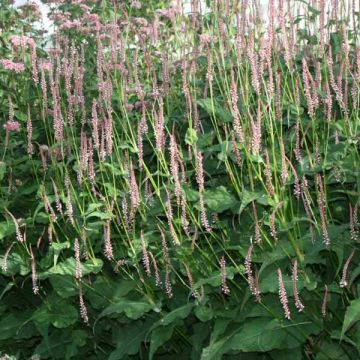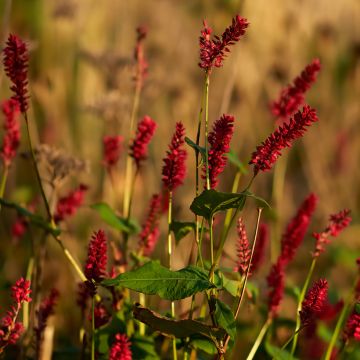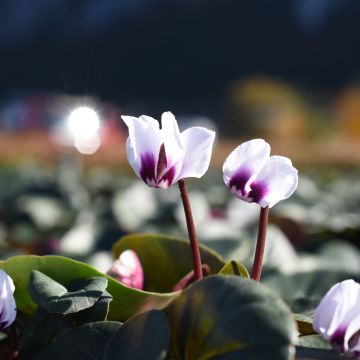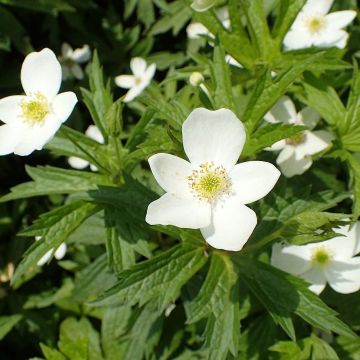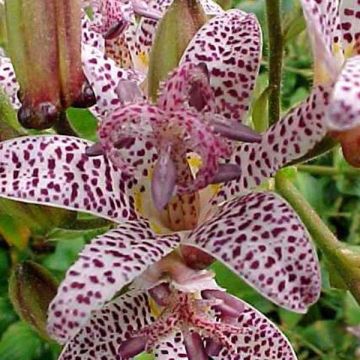

Polygonum scoparium - Renouée à balais
Polygonum scoparium
Polygonum scoparium
Knotweed
Arrived in good condition and well packaged. We'll see once it's grown.
Valoudu78126 , 02/02/2024
This item cannot be shipped to the selected country
Delivery charge from €5.90
More information
Schedule delivery date,
and select date in basket
This plant carries a 12 months recovery warranty
More information
We guarantee the quality of our plants for a full growing cycle, and will replace at our expense any plant that fails to recover under normal climatic and planting conditions.
From €5.90 for pickup delivery and €6.90 for home delivery
Express home delivery from €8.90.

Does this plant fit my garden?
Set up your Plantfit profile →
Description
Polygonum or Persicaria scoparium is a very curious perennial plant from Mediterranean marshes that proves to be indifferent to summer drought, rather like the cane of Provence. The comparison stops there: forming a tuft of slender stems adorned with black rings, it rather resembles a horsetail. And when spring arrives, the tuft sags a bit and takes on the appearance of white broom, covered with a mist of small fragrant stars. It would be a shame not to try growing this unusual plant: give it sun, well-drained but moist soil during flowering, in a somewhat wild area of the garden or along the edge of a pond and prune it every 2 or 3 years.
Polygonum scoparium is a plant of the Polygonaceae family native to marshy and occasionally waterlogged areas of Sardinia and the west coast of Corsica. The genus name, Polygonum, refers to the morphology of the stems: from the Greek poly, "several", and gonu, "knee", because of the swollen nodes that segment the stem along its entire length. The epithet scoparium is related to the stiff and slender appearance of the stems, which resemble those of broom plants. This rhizomatous plant is not invasive. It forms a persistent tuft that is tall and wide, composed of bare, erect, unbranched, smooth, cylindrical, very thin stems, almost devoid of leaves. They are a slightly greyish olive-green, adorned with darker nodes arranged at regular intervals. Flowering takes place in April-May in Mediterranean climates, before the arrival of heat and drought, and sometimes again in September, with the return of rain. Elsewhere, the plant flowers from June to September. The flowers are arranged along the entire length of the stems. They are very small, white star-shaped flowers touched with pink and yellow stamens.
Hardy in zone 7 (down to -15 °C (5 °F)) and loving waterlogged soils, Polygonum scoparium will find its rightful place near water features, alongside Gomphostigma virgatum, which resembles it a bit but is less cold-tolerant. But it also adapts very well in flower beds, in any well-drained ordinary soil, as long as it does not lack water during its growth, and even in dry soil during summer. Its origins also make it suitable for ornamental gardens in Mediterranean climates and coastal areas, with occasional watering. It can be associated, for example, in moist soil, with horsetails, Carex pendula, and cannas to add an exotic touch, as well as Euphorbia palustris. In a natural or country-style flower bed, it will also accompany Alliums for a contrast of patterns, the purple stars of tall asters (Aster turbinellus), and Verbena hastata Rosea with fabulous autumn colours. It is an easy perennial that requires little monitoring and proves to be long-lasting.
Report an error about the product description
Polygonum scoparium in pictures


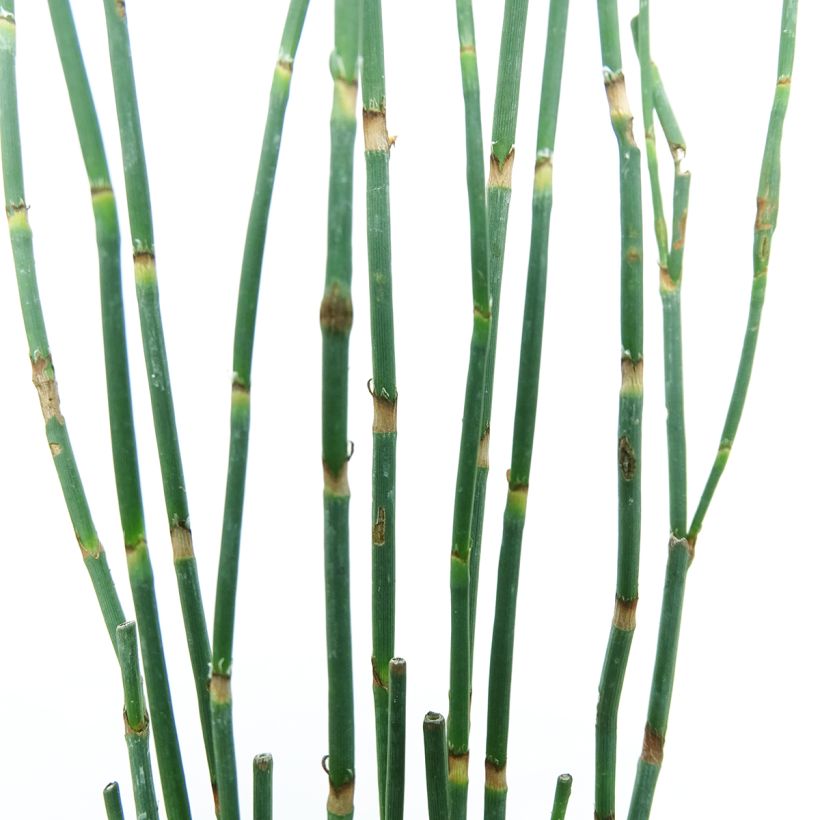



Flowering
Foliage
Plant habit
Botanical data
Polygonum
scoparium
Polygonaceae
Knotweed
Mediterranean
Other Persicaria - Knotweed
Planting and care
Plant Polygonum scoparium in a sunny location in well-drained or even waterlogged soil. It does not have any specific requirements regarding soil pH, accepting limestone soils very well. This plant is hardy down to -15 °C (5 °F) and tolerates dry summers very well. You can place it on the edge of a pond or in a flower bed, even by the seaside. The soil should always be moist during the growth and flowering period, but can be completely dry in summer. To maintain its attractive habit, it is necessary to prune it every 2 or 3 years, at the end of winter.
Planting period
Intended location
Care
-
, onOrder confirmed
Reply from on Promesse de fleurs
Shade-loving perennials
Haven't found what you were looking for?
Hardiness is the lowest winter temperature a plant can endure without suffering serious damage or even dying. However, hardiness is affected by location (a sheltered area, such as a patio), protection (winter cover) and soil type (hardiness is improved by well-drained soil).

Photo Sharing Terms & Conditions
In order to encourage gardeners to interact and share their experiences, Promesse de fleurs offers various media enabling content to be uploaded onto its Site - in particular via the ‘Photo sharing’ module.
The User agrees to refrain from:
- Posting any content that is illegal, prejudicial, insulting, racist, inciteful to hatred, revisionist, contrary to public decency, that infringes on privacy or on the privacy rights of third parties, in particular the publicity rights of persons and goods, intellectual property rights, or the right to privacy.
- Submitting content on behalf of a third party;
- Impersonate the identity of a third party and/or publish any personal information about a third party;
In general, the User undertakes to refrain from any unethical behaviour.
All Content (in particular text, comments, files, images, photos, videos, creative works, etc.), which may be subject to property or intellectual property rights, image or other private rights, shall remain the property of the User, subject to the limited rights granted by the terms of the licence granted by Promesse de fleurs as stated below. Users are at liberty to publish or not to publish such Content on the Site, notably via the ‘Photo Sharing’ facility, and accept that this Content shall be made public and freely accessible, notably on the Internet.
Users further acknowledge, undertake to have ,and guarantee that they hold all necessary rights and permissions to publish such material on the Site, in particular with regard to the legislation in force pertaining to any privacy, property, intellectual property, image, or contractual rights, or rights of any other nature. By publishing such Content on the Site, Users acknowledge accepting full liability as publishers of the Content within the meaning of the law, and grant Promesse de fleurs, free of charge, an inclusive, worldwide licence for the said Content for the entire duration of its publication, including all reproduction, representation, up/downloading, displaying, performing, transmission, and storage rights.
Users also grant permission for their name to be linked to the Content and accept that this link may not always be made available.
By engaging in posting material, Users consent to their Content becoming automatically accessible on the Internet, in particular on other sites and/or blogs and/or web pages of the Promesse de fleurs site, including in particular social pages and the Promesse de fleurs catalogue.
Users may secure the removal of entrusted content free of charge by issuing a simple request via our contact form.
The flowering period indicated on our website applies to countries and regions located in USDA zone 8 (France, the United Kingdom, Ireland, the Netherlands, etc.)
It will vary according to where you live:
- In zones 9 to 10 (Italy, Spain, Greece, etc.), flowering will occur about 2 to 4 weeks earlier.
- In zones 6 to 7 (Germany, Poland, Slovenia, and lower mountainous regions), flowering will be delayed by 2 to 3 weeks.
- In zone 5 (Central Europe, Scandinavia), blooming will be delayed by 3 to 5 weeks.
In temperate climates, pruning of spring-flowering shrubs (forsythia, spireas, etc.) should be done just after flowering.
Pruning of summer-flowering shrubs (Indian Lilac, Perovskia, etc.) can be done in winter or spring.
In cold regions as well as with frost-sensitive plants, avoid pruning too early when severe frosts may still occur.
The planting period indicated on our website applies to countries and regions located in USDA zone 8 (France, United Kingdom, Ireland, Netherlands).
It will vary according to where you live:
- In Mediterranean zones (Marseille, Madrid, Milan, etc.), autumn and winter are the best planting periods.
- In continental zones (Strasbourg, Munich, Vienna, etc.), delay planting by 2 to 3 weeks in spring and bring it forward by 2 to 4 weeks in autumn.
- In mountainous regions (the Alps, Pyrenees, Carpathians, etc.), it is best to plant in late spring (May-June) or late summer (August-September).
The harvesting period indicated on our website applies to countries and regions in USDA zone 8 (France, England, Ireland, the Netherlands).
In colder areas (Scandinavia, Poland, Austria...) fruit and vegetable harvests are likely to be delayed by 3-4 weeks.
In warmer areas (Italy, Spain, Greece, etc.), harvesting will probably take place earlier, depending on weather conditions.
The sowing periods indicated on our website apply to countries and regions within USDA Zone 8 (France, UK, Ireland, Netherlands).
In colder areas (Scandinavia, Poland, Austria...), delay any outdoor sowing by 3-4 weeks, or sow under glass.
In warmer climes (Italy, Spain, Greece, etc.), bring outdoor sowing forward by a few weeks.




































